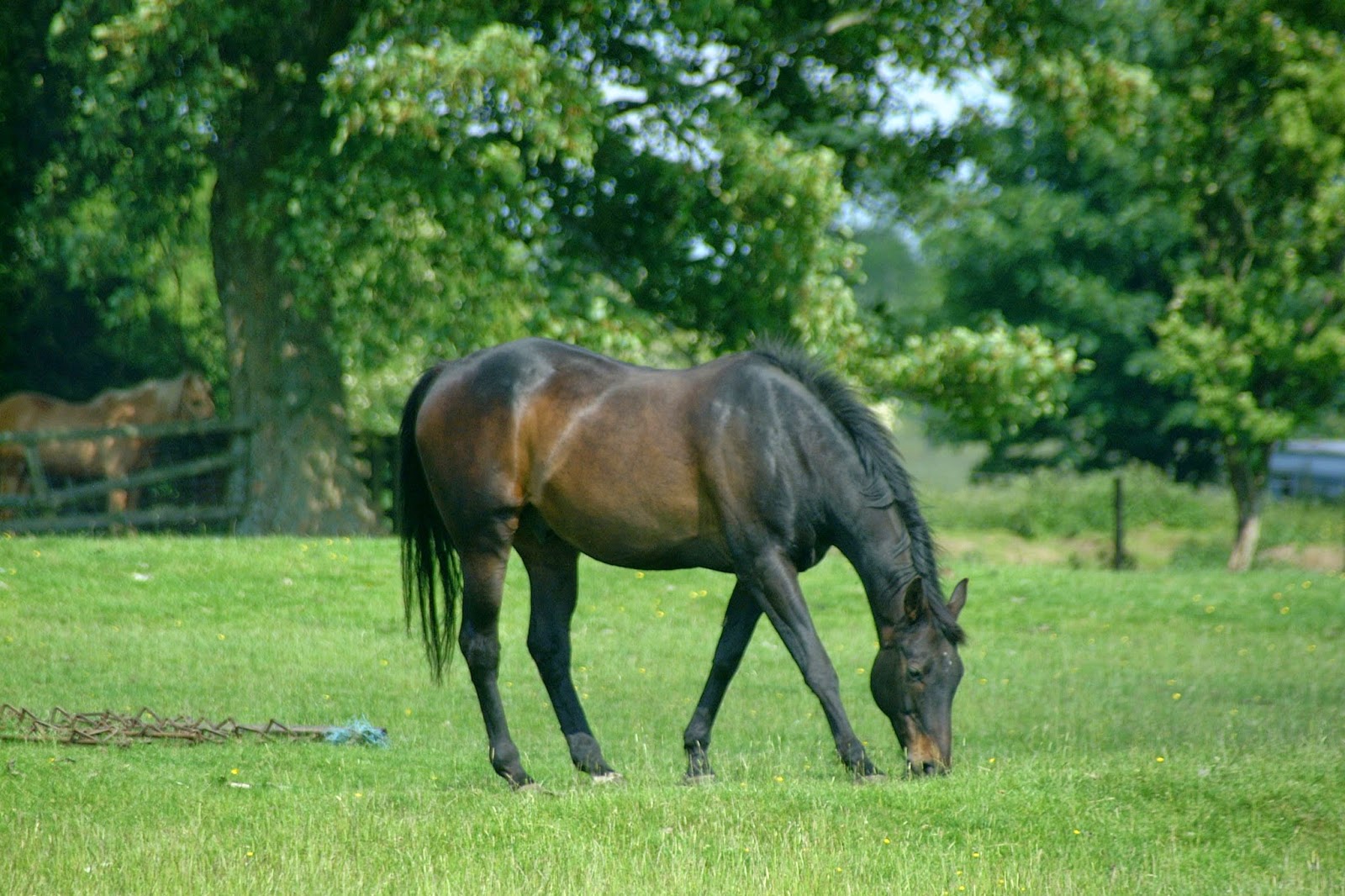 Its spring, the grass is coming through and many of us are
looking forward to warmer weather, lighter nights and less mucking out. However
for some, the prospect of managing a laminitic horse or pony as the grass
shoots through isn’t a welcome one. If this sounds familiar, the following tips
might be helpful.
Its spring, the grass is coming through and many of us are
looking forward to warmer weather, lighter nights and less mucking out. However
for some, the prospect of managing a laminitic horse or pony as the grass
shoots through isn’t a welcome one. If this sounds familiar, the following tips
might be helpful.Grass grows more rapidly in spring and contains higher levels of sugar and fructan, which means restricting grazing is crucial. Research has shown ponies with unlimited turnout can consume up to 5% of their bodyweight in grass per day, which for a 350kg pony equates to approximately 1.3kg of simple sugar contributing to a total of 9kg of water soluble carbohydrate (WSC = sugar + fructan) from grass alone. You could therefore consider using a muzzle, which can reduce grass intake by up to 80%, significantly reducing WSC intake also, however muzzles should be well fitted and not left on for 24hrs. Other options include turning out in bare paddocks or strip grazing, but always remember to back fence, ensuring paddocks don’t simply increase in size. Alternatively if stabling to limit turnout time, be mindful that turning out for short periods without muzzles may encourage gorging. In a recent study ponies were seen to consume almost 1% of their bodyweight in just 3hrs! For some horses and ponies, grazing may need to be removed completely and suitable forage supplied. When this is the case consider using ménages and bark paddocks for turn out and remember not to restrict forage intake to less than 1.5% of their bodyweight per day unless under veterinary supervision.
Ideally forage and forage replacers for laminitics should
contain less than 10% WSC. Although soaking hay has been shown to reduce WSC by
up to 50%, results are variable and some may contain more than 20% to begin
with. Soaking for 12-16hours in tepid water (16°C) is the optimum however as
temperatures rise, it is recommend to reduce soaking time down to just 6 hours
to help prevent bacteria build up. Forage analysis is another option and the
only way to determine true WSC content. Alternatively provide a hay replacer
approved by the laminitis trust.
Finally maintaining a healthy body condition and providing a
balanced supply of vitamins, minerals and quality proteins is vital all year
round. If your horse or pony maintains their weight on forage alone, consider a
balancer, a small nutrient dense pellet that contains negligible levels of
calories therefore avoiding weight gain. Body condition score your horse or
pony regularly, always aiming to maintain a score of 4.5-5 on a scale of 1-9.
If additional calories are needed, look for fibre based feeds which are low in
starch and sugar.
Prevention is always better than cure and although you may
still be mucking out whilst others are turning their horse out for the summer,
careful management can help to ensure you and your horse still enjoy the
arrival of spring and those warm evening rides. If you would like more advice
on managing your laminitic horse or pony this spring, please call the SPILLERS®
Care-Line on 01908 226626.

No comments:
Post a Comment